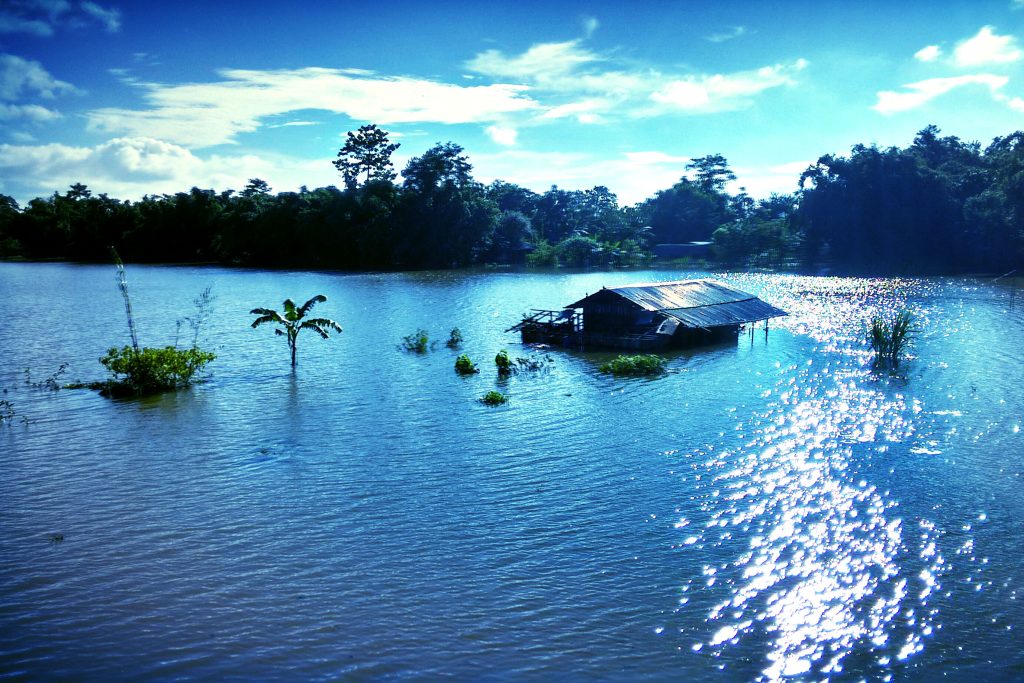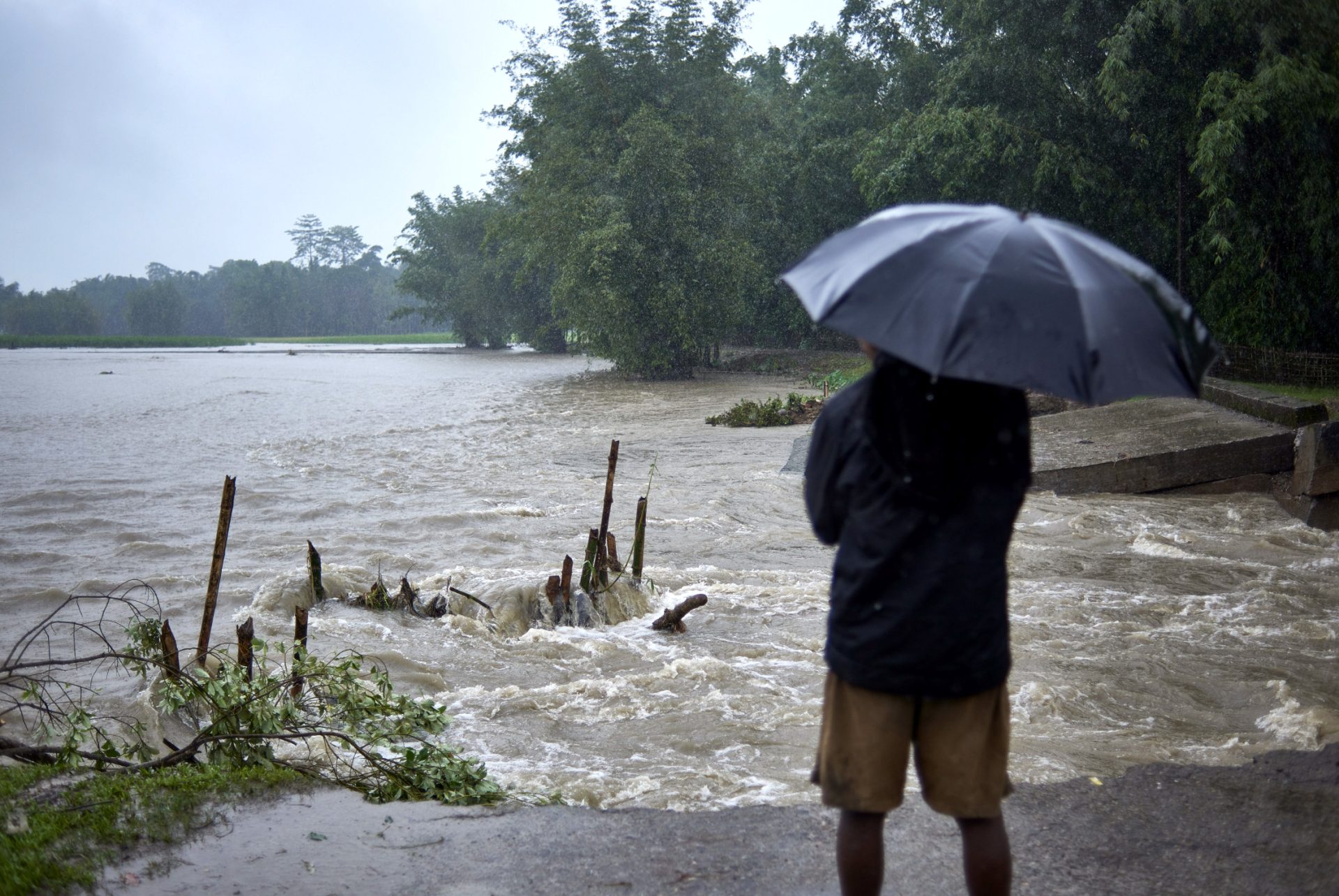(This story by Anumeha Verma originally appeared on Global Voices on December 14, 2021.)
The Brahmaputra River and its tributaries have shaped the landscape of India’s northeastern region for centuries, but this year once again, monsoon season brought with it massive flooding in the Assam Valley. Swelling rivers inundated several parts of the state, causing populations living alongside the river basin to shift multiple times.
Now, in the face of failing flood management and protection structures, local village communities and volunteer groups are stepping up and helping themselves when it comes to relief and rehabilitation efforts.
A worsening plight
The environmentally focused news site Down to Earth published a story on the plight of Mas Dihiri village, located in the Dhemaji district of Assam. Here, the Kumutiya River, one of the Bramhaputra’s tributaries, is given to shift its course rapidly — with devastating results. The river has shifted course by as much as three kilometers since 1960, and stories like these are not standalone but, rather, scattered across the length and breadth of Assam. When the village of Majdolopa, for instance, experienced another sudden flood surge in July 2020, people found themselves trapped as the Brahmaputra swelled after incessant rains.
The change in rainfall patterns and the resulting floods point towards an interconnectedness with climate change. In October, the Council on Energy, Environment and Water (CEEW) released a report titled, Mapping India’s Climate Vulnerability – A District-level Assessment, based on its analysis of 646 districts across India. It ranks Assam among five states that are most vulnerable to calamities such as floods, droughts and cyclones, with four of its districts — Dhemaji, Nangaon, Darrang and Lakhimpur — featuring amongst the 20 most vulnerable spots in the country.
The predominant reason for global warming and interlinked climate change has been laid at the doorstep of CO2 emissions. India is one of the prominent contributors to this problem, owing to rapid industrialization and urbanization. According to Nature Climate Change journal, India emitted 2.65 billion tons CO2 between 2016 and 2019.
Climate change means that snow melts faster, adding to the volume of water in snow-fed rivers at their origin itself. In addition, the total number of rainfall days during the monsoon has decreased, but the intensity of rainfall on these days has increased. Cloudbursts and intense rainfall result in flash floods with little to no warning.
Citizens and policymakers alike have acknowledged the evident crisis in the valley.
Every year, hundreds of thousands of people are affected by these floods, losing their lives, homes, crops and livestock. By September 2021, the floods had already affected more than 600,000 people across several districts, claiming five lives in the process. People who live along the river basin are often forced to take refuge in relief camps for weeks on end, before returning to the shambles of what once represented their lives.
From 2020 to 2021, the narrative has hardly changed; micro-blogging sites like Twitter are littered with tales of the misery of flooding in Assam, and noting its painful effects — from displacement to food insecurity.

Volunteer groups to the rescue
As the crisis in Assam has deepened, so has people’s commitment to finding new ways of adapting. The National Disaster Response Force (NDRF) has found itself buoyed by village communities and volunteer groups like the Majdolopa Village Disaster Management Committee, which have emerged to take charge of the situation. Established in 2015, the group has about 23 young volunteers who saved lives and helped stranded citizens when the river swelled earlier this year.
Several such committees dot the geography of Assam today. The village of Chomoni Chapori also has a disaster management committee, with volunteers catering to the needs of not just their own community, but also those of nearby villages — and these citizen-based initiatives are both logical and systematic in their approach. The Chomoni Chapori village committee has four groups: the first acts as an early warning system, the second supplies first-aid workers, the third deals with sanitation and hygiene once disaster strikes, and the fourth provides search teams to look for missing persons and possible survivors.
Citizens are also leveraging the power of whatever technology they have at their fingertips, using WhatsApp groups to send out early flood warnings. In 2019, when incessant rainfall broke river banks, one of these initiatives, the Friendship Association, routed messages on the approaching floods — from Bhutan all the way to Assam — through their friends and India-based NGOs.
However, while people rise to the occasion every single time to lend support to their villages and communities, these informal measures require fortification through more formal means. In November, during a parliamentary session, the failure of India’s flood management system was cited as one of the reasons for the dire situation in Assam — but whether this will trigger additional measures to alleviate the sufferings of the area’s residents remains to be seen.







